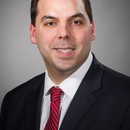Dr. Onisis Stefas, vice president and chief pharmacy officer at Northwell Health, a New York–based health system, notes that just a few years ago a medical desert would be defined by the number of brick-and-mortar hospitals, doctor’s offices and pharmacies found there. Now it can mean a lack of access to internet connectivity or care, including telemedicine, telepharmacies, smart devices or computers, Stefas says.
“I think it’s more of a broader definition of not just the number of physical resources, but what other types of care can you access within that community,” Stefas says.
How Sanford Health Reduces Friction in Medical Deserts
Headquartered in Sioux Falls, S.D., Sanford Health serves more than 1 million patients across 250,000 square miles. Geographic distance and transportation issues as well as provider shortages can make it difficult to access care, says Erica DeBoer, the health system’s chief nursing officer.
Jared Antczak, Sanford Health’s chief digital officer, notes that in addition to a lack of broadband internet or cellular connectivity, device access and digital literacy are all social determinants of health and can contribute to medical deserts.
“All of these things create friction, and friction creates barriers to engagement,” Antczak explains. He says the goal is to create a “simple, intuitive and seamless” digital experience in healthcare, like streaming services such as Netflix do in entertainment and Uber in transportation. Sanford Health uses the Epic MyChart patient portal to send secure messages to patients to keep them connected with their providers. Sanford Health, the largest rural health system in the U.S., has also set up mobile clinics for patients who otherwise would have to travel four to six hours to receive pulmonary care.
EXPLORE: How virtual care expands patient access and engagement in pediatrics.
Virtual care is a key part of Sanford Health’s strategy to reach patients in remote areas. The health system has deployed TytoCare home exam kits so patients can receive remote care for conditions such as earaches or sore throats. They can also receive prescriptions for antibiotics through TytoCare visits with doctors, DeBoer says. Sanford also sends trucks equipped with mobile mammography and other diagnostic imaging capabilities to patients in medical deserts.
In 2021, the health system launched a $350 million initiative to build a virtual care center to reach patients in rural and underserved communities across the Midwest, including North Dakota, South Dakota and Minnesota. As part of the virtual care initiative, Sanford plans to set up small, two-room clinics in farming communities with populations of 2,000 or less. These rural satellite clinics will be staffed by nurses to help patients who may not have access to broadband to log in to a telemedicine visit, DeBoer says. Remote access for patient monitoring, primary and specialist care, mental health services and additional advanced resources will be available 24/7 at these sites.
Meanwhile, Sanford Health is developing machine learning algorithms, embedded in the electronic medical record, to identify health concerns and intervene earlier to improve outcomes, says Antczak; for example, such screenings might prompt clinicians to recommend earlier preventive care if patients are at high risk for a condition such as diabetes or breast cancer.
Alleviating Medical Deserts Using Chatbots and Telemedicine
Northwell Health has developed an app that uses artificial intelligence to coordinate Black maternal health in particular ZIP codes that need it. Stefas says a chatbot asks mothers questions such as whether they are taking their aspirin if they have preeclampsia, a complication during pregnancy that causes high blood pressure, among other symptoms.
“Based on their responses, an algorithm can directly link them to our emergency department on demand, where they can meet with an ED doc virtually for further assessment,” Stefas says. “Or it will route them to the provider that would make sense based on their responses.”












